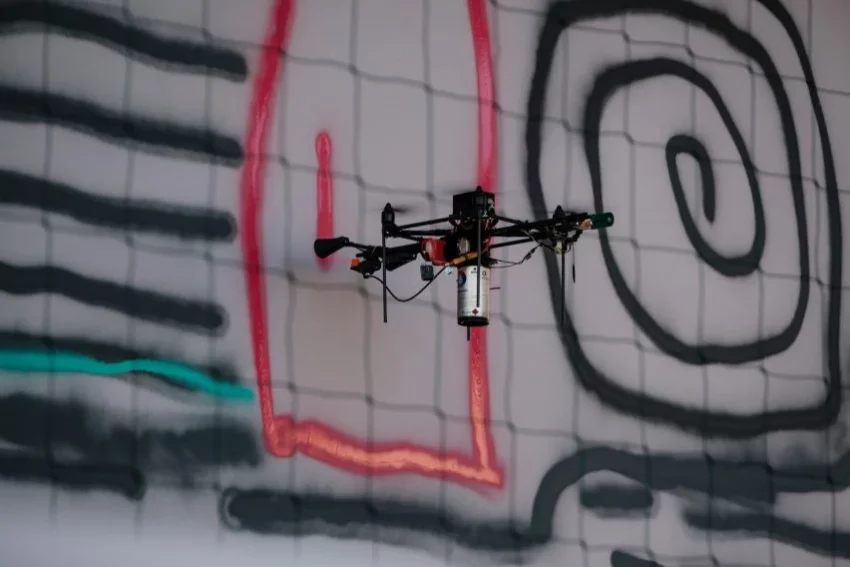Spray painting with drones has become a popular technique for large-scale painting projects that require precision and speed. With the use of a drone, it is possible to paint large surfaces in less time than traditional painting methods, and with greater accuracy and consistency. In this article, we will explore the benefits and challenges of spray painting with drones and discuss some of the equipment and techniques used in this innovative painting method.
Benefits of Spray Painting with Drones:
Speed: One of the biggest advantages of spray painting with drones is speed. Drones can cover large surfaces quickly and efficiently, allowing for faster completion of painting projects.
Precision: Drones can be programmed to follow a precise path, ensuring accurate and consistent application of paint. This can result in a smoother finish and reduced overspray compared to traditional painting methods.
Safety: Spray painting with drones can be safer than traditional painting methods, especially for hard-to-reach areas such as tall buildings or bridges. Drones can access these areas without putting painters at risk of falls or other accidents.
Cost-effective: While the initial investment in a drone and spray painting equipment may be higher than traditional painting methods, the long-term cost savings can be significant. Spray painting with drones can reduce the amount of paint needed and minimize labor costs, resulting in overall cost savings.
Challenges of Spray Painting with Drones:
Weather conditions: Spray painting with drones requires optimal weather conditions such as low winds, no rain, and moderate temperatures. Poor weather conditions can affect the accuracy of the drone’s flight path and result in an uneven application of paint.
Environmental concerns: Spray painting with drones can generate a significant amount of overspray, which can pose environmental concerns if not properly contained. It is important to take measures to prevent overspray from contaminating the surrounding environment.
Equipment maintenance: Maintaining the drone and spray painting equipment requires specialized knowledge and can be time-consuming. It is important to follow the manufacturer’s guidelines for maintenance to ensure safe and efficient operation.
Equipment and Techniques for Spray Painting with Drones:
Drone:
The drone used for spray painting should be large enough to carry the spray painting equipment and should have a stable flight path. It should also equippe with GPS to ensure accurate positioning and avoid collisions.
Spray painting equipment:
The spray painting equipment used with the drone should be specifically designed for aerial application. The equipment should be lightweight and easy to handle, and should have a nozzle that can be adjusted for different spray patterns.
Paint:
The paint used for spray painting with drones should be formulated for aerial application and should have a low viscosity to ensure consistent flow through the spray painting equipment. It is important to choose a paint that is environmentally friendly and safe for the surrounding environment.
Flight planning software:
Flight planning software can be used to program the drone’s flight path and ensure the accurate application of paint. The software can also help to avoid obstacles and ensure the drone stays within a designated area.
Safety equipment:
When using a drone for spray painting, it is important to have the proper safety equipment, such as a respirator, gloves, and safety glasses. It is also important to have a safety plan in place and to follow all applicable safety regulations.
In conclusion,
spray painting with drones can be a fast, precise, and cost-effective way to paint large surfaces. While there are challenges to this innovative painting method, with proper equipment, techniques, and safety measures, it can be a safe and efficient way to complete painting projects. As technology continues to advance, we can expect to see more widespread use of spray painting with drones in the future.

